Landing pages are a popular tool used in inbound marketing to attract customers and generate leads. But simply creating a landing page and waiting for the leads to come isn’t enough. You need to create effective landing pages that encourage a visitor to become a lead.
What are landing pages?
A landing page is a dedicated page that seeks to drive leads and conversions. It focuses on providing an offering to your prospects to encourage them to take action.
Compared to other pages on your website, a landing page is created specifically with the sole aim of converting a prospect to a lead. Leads are generated from a landing page through the submission of the prospect’s details, usually via a form in return for your offering.
A landing page should seek to attract and engage a prospect that will drive them to take the desired action. The combination of written copy, visual content, and layout all play a crucial role in determining the effectiveness of your landing pages.
A landing page can be used for multiple different offerings, including:
- Gated content such as guides and eBooks
- Subscriptions to newsletters or emails
- Enrolling for a product trial
- Registering for an event
- Signing up for a course
- Submitting interest in a product, service, or feature
- Downloading resources
Benefits of landing pages
Before we begin exploring the tips for creating effective landing pages, let’s explore the benefits you can gain from the use of landing pages.
Creating landing pages for a specific product, service, or content offering will provide you with:
- Increased leads and conversions
- Driving more traffic to your site
- Attracting and grow your customer base
- Using analytics and data to guide your inbound marketing efforts
- Delivering tailored content to specific customer segments
- Building trust and credibility
- Higher brand awareness
Tips for creating lead-generating landing pages
While landing pages are a great tool for helping to generate leads and boost conversions, if your landing page is not effective, it will fail to encourage potential customers to sign up for your offer.
To create an effective landing page, consider these 12 tips:
Table of Contents:
- Tip 1: Limit form fields
- Tip 2: Compelling written copy
- Tip 3: Appealing and attractive images
- Tip 4: Prioritize the above-the-fold content
- Tip 5: Focus on one goal and offer
- Tip 6: Color psychology
- Tip 7: Use clear call-to-actions
- Tip 8: Conduct A/B testing
- Tip 9: Optimize for SEO
- Tip 10: Mobile responsive
- Tip 11: Use testimonials
- Tip 12: Say thank you
Tip 1: Limit form fields
You need to make your forms simple and quick to fill in. Only include the essential fields. For example, asking for details about your lead’s job details is usually irrelevant for downloading a content offer. The easier you make your form to fill in, the better for your prospects and form submissions.
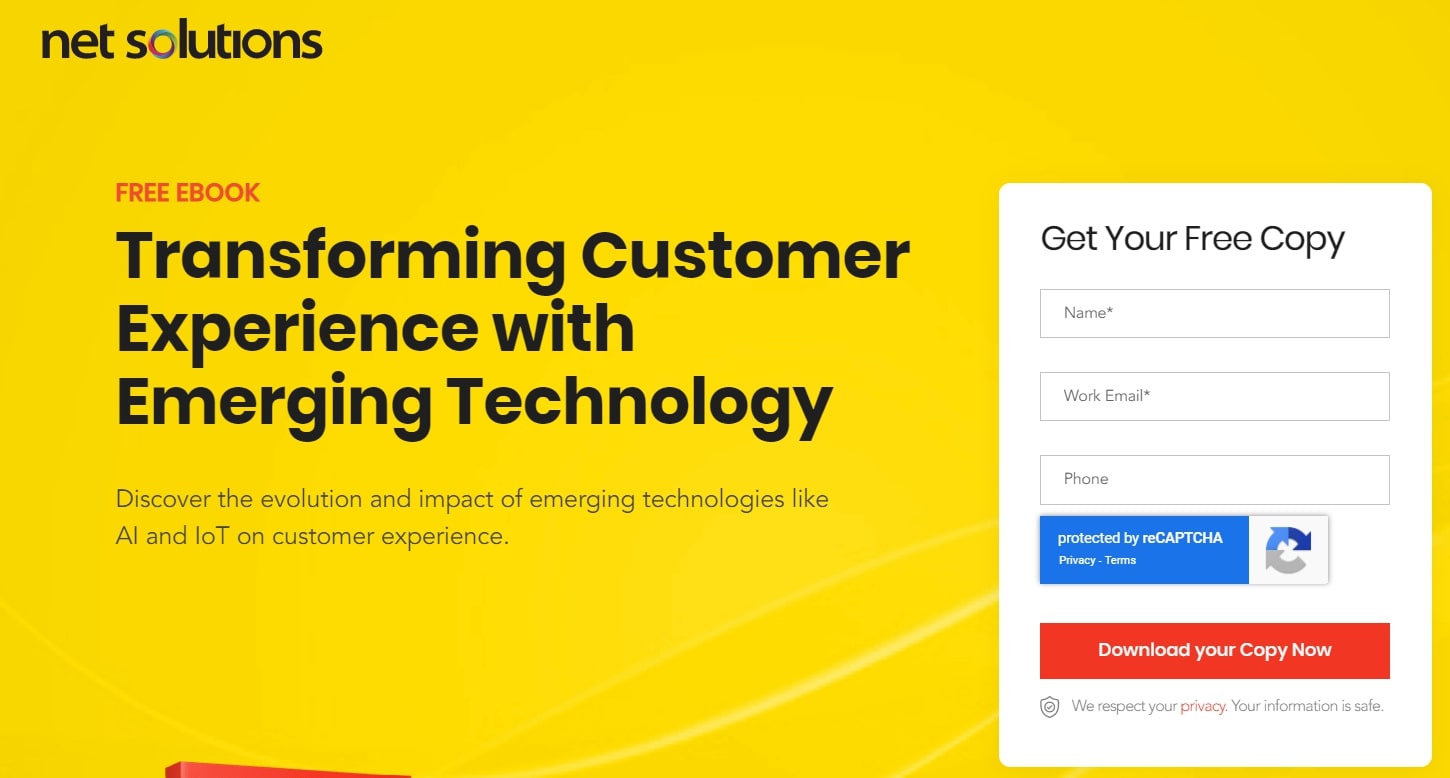
Tip 2: Compelling written copy
While it may be true, a picture can tell a thousand words, you need to include more on your landing page than just images. You need to provide a compelling copy that will persuade and drive your prospects to take action.
But including long and unclear written copy won’t do your form submissions any good. Long-form written content is better suited for blog posts, content offers and pillar pages. A landing page is a piece of short-form written content.
Here’s an example of a landing page for a content offer to download a free workbook from Tribal Impact:
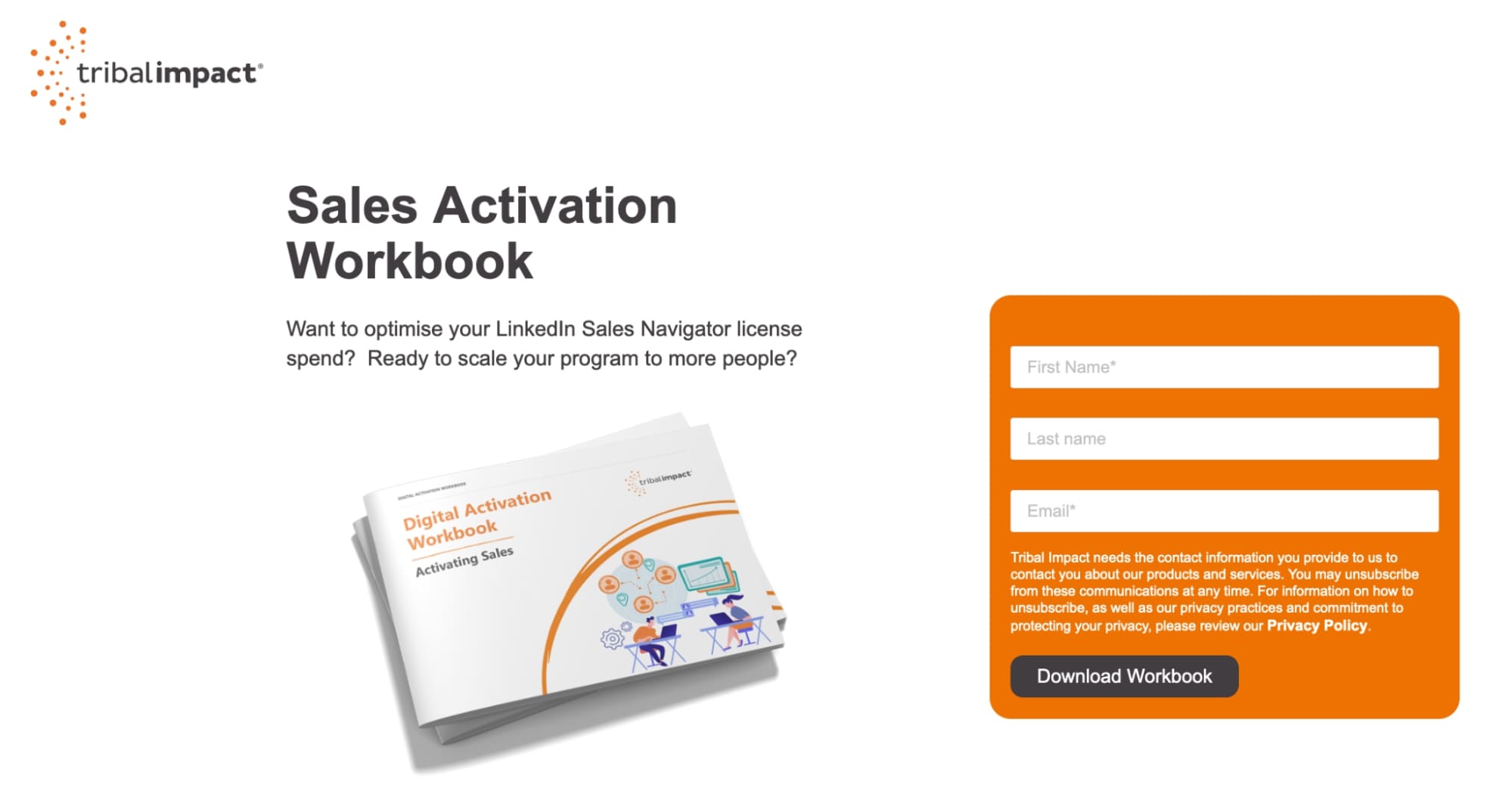
For that reason, the written copy you include on your landing page needs to be clear, concise, and compelling. The written copy also needs to support your call-to-action and outline the benefits a lead can obtain from registering for your offer.
Use small and easy-to-read paragraphs with a large font size alongside headings and bullet points for maximum effect.
Tip 3: Appealing and attractive images
No matter what form of content you create, you should be including images. The same goes for your landing pages, as it helps to attract and engage your prospects. But you need to be careful about finding the right balance for your images and visuals on a landing page.
Too many images and you ruin the impact, too few, and you risk failing to captivate your prospect. Ideally, an effective landing page will seek to include 1 or 2 images and that’s it. The images you use also need to support the offer of your landing page rather than take over. If possible, try and showcase what your content offer looks like, so your leads know what to expect, too.
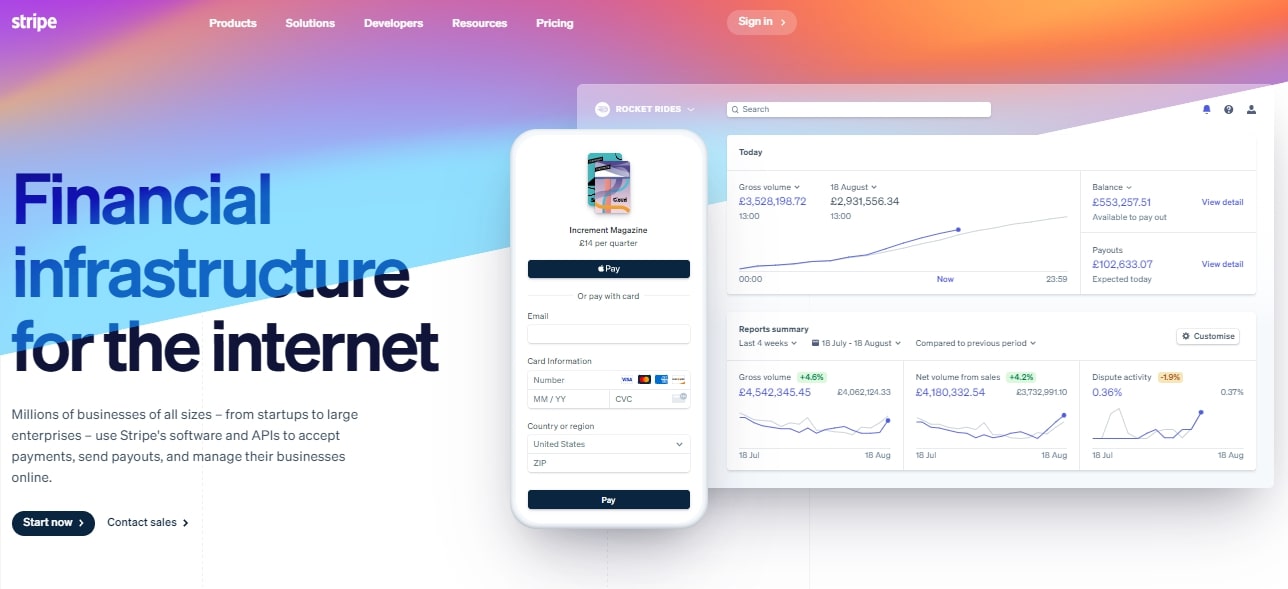
Tip 4: Prioritize the above-the-fold content
Above the fold is the content that will be visible straight away on a page without the user scrolling. All the most important elements of your landing page should be above-the-fold rather than below.
Elements such as your form, call-to-action, headline, brief written copy, and main image should be placed above the fold. That way, your potential leads have a snapshot of all the most important information at hand straight away.
A landing page on Mention prioritizes above-the-fold content:
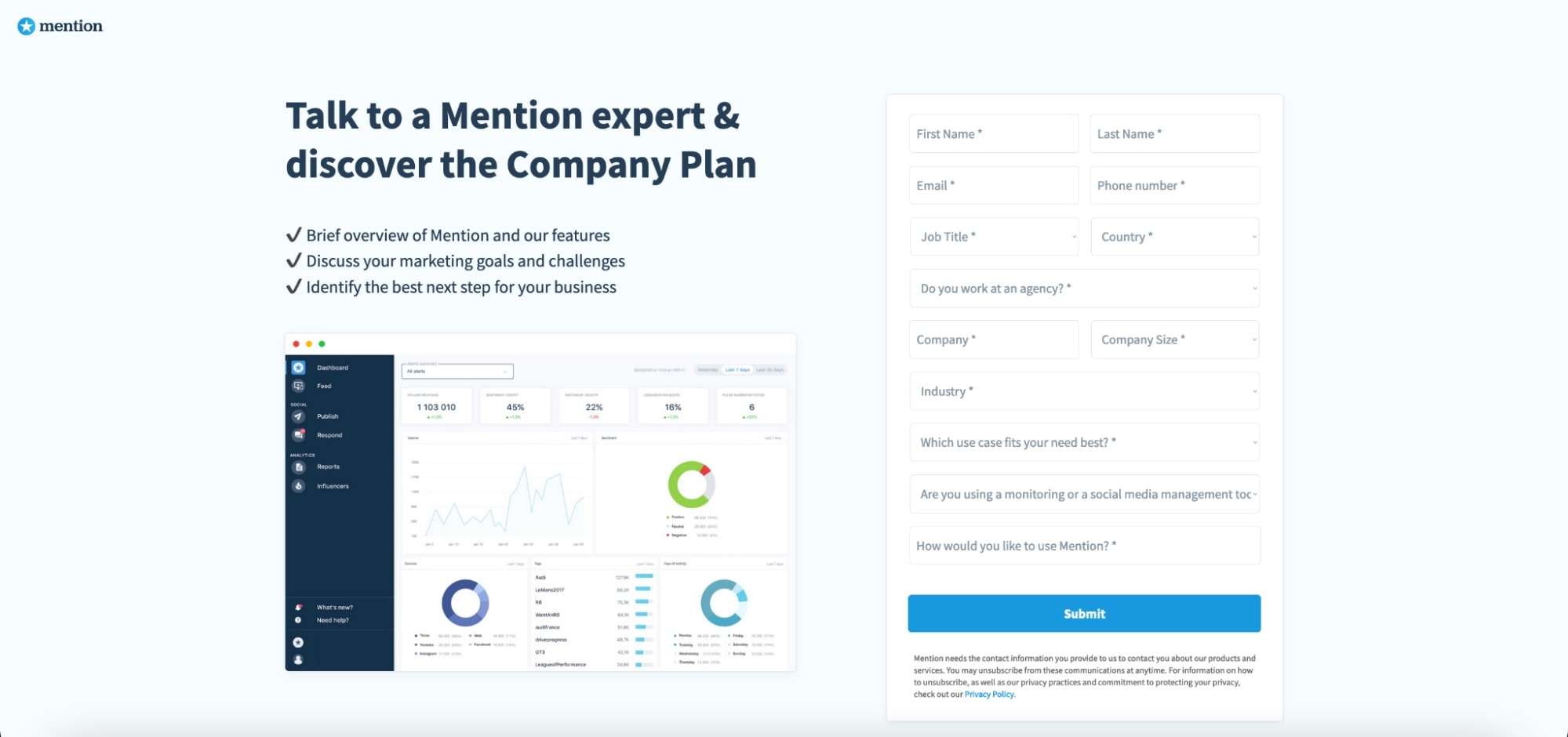
Tip 5: Focus on one goal and offer
Many will make the easy mistake of trying to achieve too much with their landing page. Whether it’s asking your prospects to do too much or confusing messages, a landing page will fail to drive leads if these mistakes are present.
Instead, your landing needs to focus on one goal, one clear message, and one focused call-to-action. That way, your prospects will clearly understand what’s expected of them and what they’ll benefit from signing up.
You should create separate landing pages for each campaign, offer, and gated content to increase conversions. After all, research has found that the more landing pages you have, the more likely a prospect is to convert.
Tip 6: Color psychology
Color has a strong impact. It can alter moods and have a strong influence on emotions. The same is true for your use of color in your landing pages and call-to-actions.
The smallest color change can have a significant effect on the effectiveness of your landing page and call-to-action. Brighter colors encourage users to engage and act due to the positive connotations associated with the color. Alternatively, dull and light colors will have the opposite effect.
Colors such as red, orange, and yellow help to stimulate action and result in much more positive engagement. Just make sure you don’t deviate your color scheme too much from your brand and campaign design schemes.
Here’s an overview of how colors can impact the effectiveness of your landing pages:
- Red helps to stimulate and excite users. It also helps to draw attention and is a color best suited for food, fashion, sports, entertainment, health, and marketing.
- Green has the opposite effect. It has a calming and refreshing quality. Ideal for science, medicine, tourism, environment, and sustainability. Avoid using the color for technology and luxury.
- Orange is very similar to red, leading to feelings of excitement, enthusiasm, and energy. While eye-catching, it should be used sparingly as it can become overpowering. Ideal for automotive, technology, food, entertainment, and e-commerce.
- Yellow is a color that helps to capture attention due to it being the brightest color. Avoid using excessive amounts of yellow, as it strains the eye and feels cheap.
- Purple is a color most associated with royalty and luxury. Interestingly, it is a color that helps to increase conversion rates. However, the color is not good for capturing attention. Ideal for targeting niche and luxury segments.
- Brown is a natural and warm color that helps stimulate appetite. Better suited for backgrounds and for finance and real estate.
- Blue is considered one of the most calming and refreshing colors. Brighter tones are more effective compared to darker tones, as it can leave a design feeling cold. Ideal for science, legal, utility, medical and health.
Here’s an example from HubSpot to showcase the difference colors can make in a call-to-action. Notice how the red is much more impactful and engaging compared to the green button. You could also use A/B testing to test color differences (more on that later).
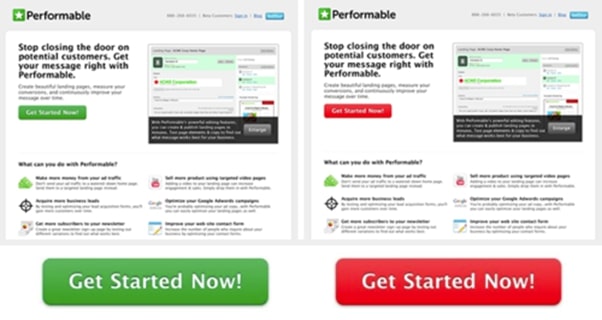
Tip 7: Use clear call-to-actions
On the subject of call-to-actions, that brings us to our next tip for creating effective landing pages. Your call-to-action is arguably the most important part of your landing page, and so it needs to be clear and stand out.
Using a bright and contrasting color that helps the call-to-action to stand out from the rest of the elements on your landing page helps. The language you use in your call-to-action also makes a huge difference.
Use short phrases with action verbs that encourage your users to click through. Adding a time element can also be effective, using words such as “now” or “today”. Adding the word “yes” to the start of a call to action adds a positive spin and increases the click-through rate too.
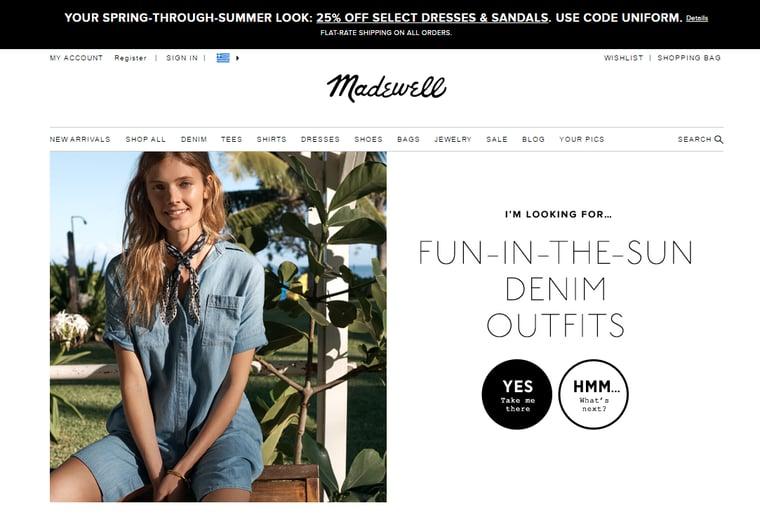
Tip 8: Conduct A/B testing
Only 17% of marketers use A/B testing on their landing pages to boost conversion rates. Yet A/B testing is one of the most effective ways of testing your landing page. Without testing, you may be creating a landing page that isn’t as effective at generating leads.
A/B testing (sometimes called split testing) uses two variations of a variable to test the effectiveness. A/B testing is conducted using two different, equal but randomly selected segments of visitors or customers.
A/B testing allows you to see the best-performing variation that drives higher actions, which ultimately results in a better-optimised landing page or website and a higher return on investment.
Given how effective A/B testing is at testing landing pages, it’s surprising why less than two-thirds of marketers are using it. Consider conducting A/B testing on your landing page by differentiating the imagery, call-to-action, or written copy. But only change one element, otherwise the test becomes over saturated and could lead to bad data.
A/B testing is just one experiment you can run to increase your CTA’s conversion rate. Check out these other experiments you can run as well.
Tip 9: Optimize for SEO
Your landing page is another page on your site, so why not optimize it for search engines? Just the same as any page on your website, search engines will crawl and index the page to appear in search results.
For that reason, it makes sense to try and boost your SEO efforts by optimizing your landing page. Your landing page is a perfect opportunity for targeting a keyword. Optimizing your landing page in line with SEO best practices is a great way to get your landing page higher in search engine result pages.
Landing pages designed for use in paid campaigns should still be optimized for SEO. That way, you can help drive extra organic traffic to your site and build trust with your leads. Even though you will have fewer links and less written copy, a landing page can still rank highly.
Tip 10: Mobile responsive
In today’s digital age, more than half of online traffic comes from a mobile device. So, you need to make your landing pages responsive to work on both desktop and mobile devices. Otherwise, you risk cutting yourself off from a large portion of potential leads.
A mobile responsive design ensures the layout and content of your pages (including landing pages) adapts to the size of the screen viewing the page. That means your pages will automatically adjust the size and layout to suit the screen resolution.
As well as making it better and easier for mobile users to view your landing pages, a mobile responsive design is a good way to optimize your pages from an SEO perspective too. Taking the time to make your landing pages responsive will help to increase your conversions.
Tip 11: Use testimonials
Reviews and testimonials are both forms of word-of-mouth and social proof that have a strong influence on users’ actions. Customers are influenced by the views of others, meaning testimonials can have a strong influence on altering prospects’ decisions.
Including testimonials on your landing pages not only helps to showcase the positive experience other customers have had, but also provides an insight into whether your offer will provide a solution to the prospect’s pain points.
Here’s an example of testimonials and social proof at work on a landing page from Teamwork:
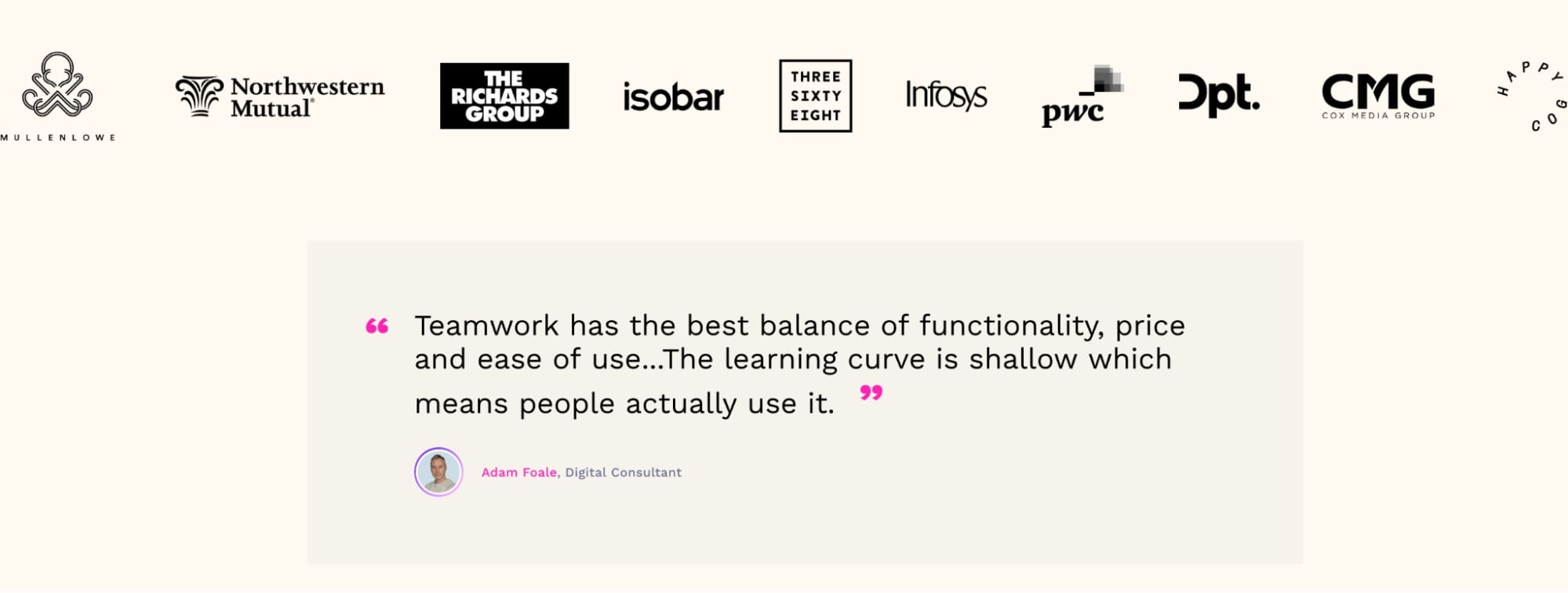
People will also copy and mimic the actions of others, referred to as social proof. If your prospects see others who have worked with your brand or the positive experiences people have received, it makes them much more likely to follow suit, showing how significant testimonials can be on landing pages.
Tip 12: Say thank you
The final tip for creating effective landing pages is to thank your lead. Usually, this happens on a separate page that the lead is directed to after clicking on the call-to-action. It is on this page that you also provide a download for the request offer, such as this example from Dreamscape:
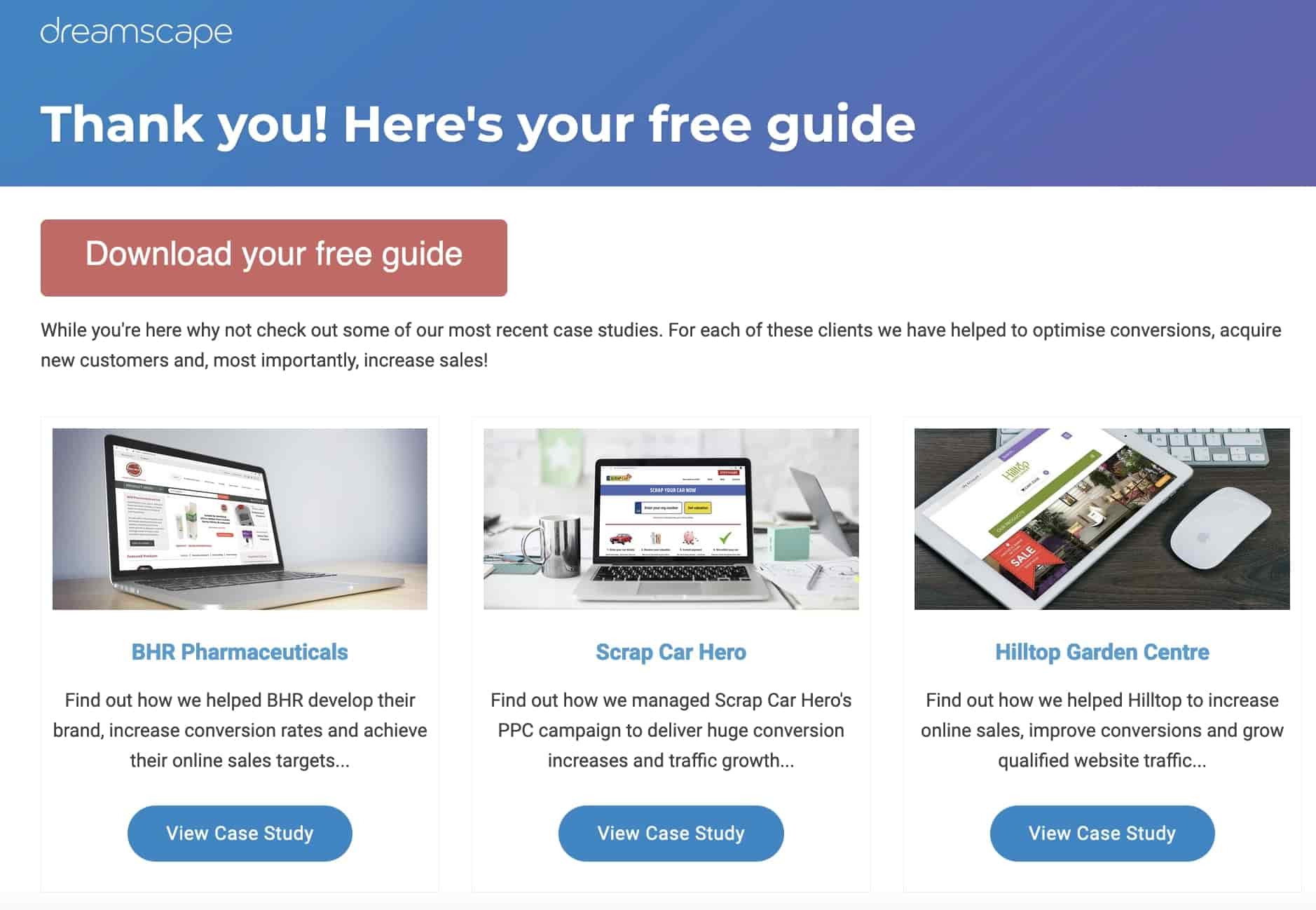
Sometimes, your landing page may not offer a download straight away. In this case, you should provide a timeframe for when the lead can expect to hear back from you. While you could provide a thank you on the landing page, using a separate page is much more beneficial.
A separate thank-you page not only delivers on the promised offer, but it shows you are interested and care about your customers. You also have a great chance for providing additional content too that can help them along the buyer’s journey.
Landing pages are a great tool for lead generation. Following these tips for creating effective landing pages will help ensure that you continue to gain high-quality leads and drive a better ROI. Don’t forget to run your A/B tests for a truly powerful way of generating leads.






